4 business networking tips for introverts
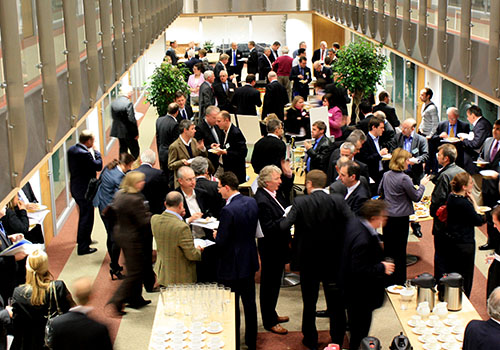
By generating contacts and opportunities in a fun, engaging and collaborative way, networking is a key activity for professionals of almost every capacity.

By generating contacts and opportunities in a fun, engaging and collaborative way, networking is a key activity for professionals of almost every capacity.
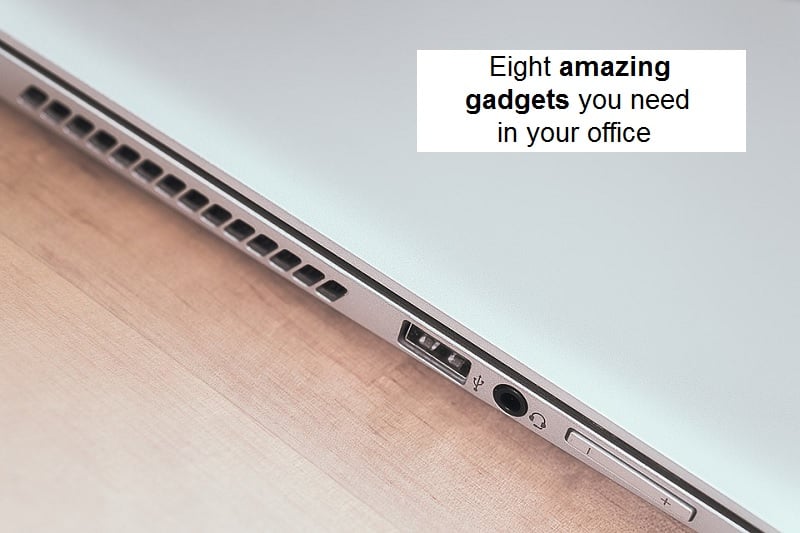
The digital age has brought with it a whole host of new opportunities for businesses. There are so many incredible products on the market, all promising to make your office more efficient and productive.
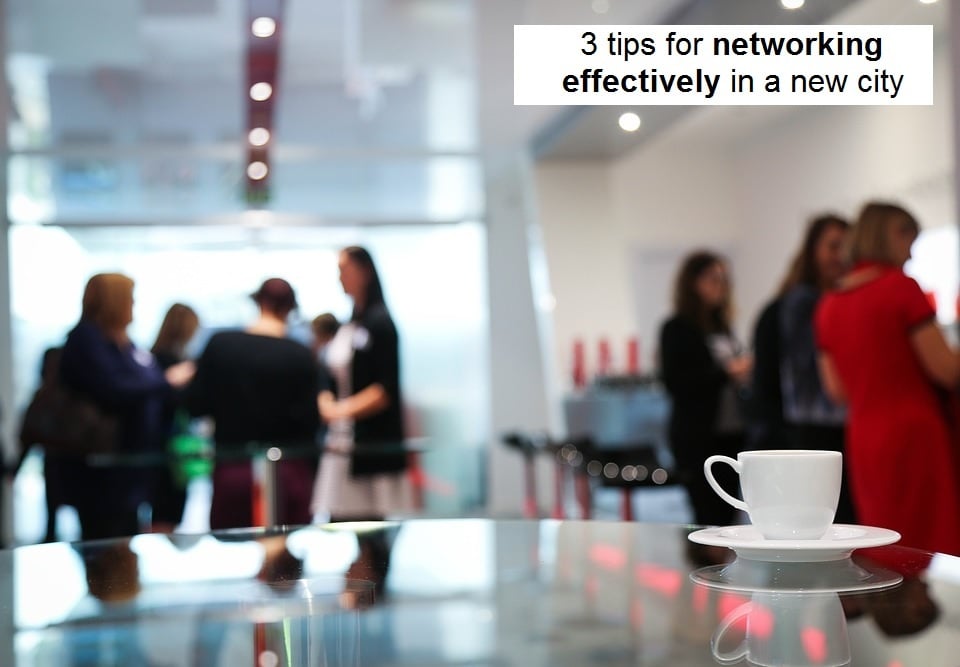
You’ve relocated to a new city; you’re establishing a business in unfamiliar territory. Naturally, you’re keen to meet people and make new contacts. What you need to do is get networking!
Read More about 3 tips for networking effectively in a new city
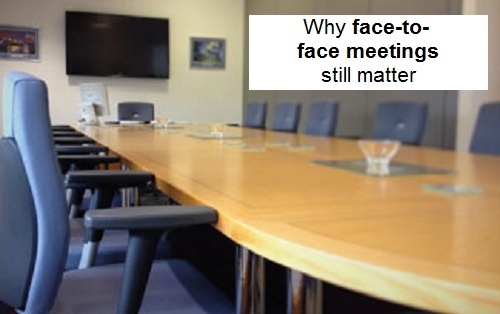
In recent years, the business world has enjoyed a digital revolution. The internet has provided us with virtual tools for just about everything, from processing payments to accessing training.
Are you a highly creative individual who radiates artistic inspiration wherever you go, but with huge variations in your productivity? Or are you an ultra-productive worker, whose organisational, logistical and management skills are second to none, but do you lack creative talent? I think most will identify more with one of these people than the other. In short, can you be both creative and productive at the same time?
In part one of a series of blog posts exploring productivity and creativity, we look at whether it’s possible to be creative and productive simultaneously:
The systemisation of productivity
Being productive requires some sort of system to be in place. As the Harvard Business Review notes, “Productive people move through the tasks they have to accomplish systematically.”
Productivity thrives on being efficient, well organised, and methodically moving through tasks.
Creativity, on the other hand, stereotypically thrives on a more spontaneous approach.
An official definition of creativity is: “The use of imagination or original ideas to create something.”
Creativity is the act of turning imaginative ideas into a reality. As Creativity At Work writes: “Creativity involves two processes: thinking, then producing.”
With this in mind, while creativity requires passion, imagination and commitment, it also requires the art of producing, which is a productive act within itself.
Although it may be difficult to systemise creativity, the result – the product – requires some form of productivity to ensure it is created and completed.
For example, an artist might be brimming with creativity, but unless they can get their work on canvas, they can hardly be considered an artist: the act of getting the artwork on canvas requires a certain level of productivity. Granted, the artist may not be as productive, rehearsed and controlled as a production line in a biscuit factory, but any medium that requires a product to be produced or a service to be offered requires productivity to get everything finished.
Although some of us seem to be ‘born’ more creative or productive than others, both skills can be learnt and worked on with a little extra time and attention spent on how we think and do things. In recent years, methods to improve productivity and creativity using various tools have become more common too (see our blog on some of the best productivity apps).
As these two talents can be developed and improved, it stands to reason that we can be creative and productive at the same time.
Where creativity and productivity mix
Some of the most successful businesses have found a perfect balance between creativity and productivity. One of the best ways to nurture both of these skills is to mix creative and productive people with one another.
It is widely agreed that the environment we conduct our work has a significant impact on the quality of the work. For example, conducting work in a co-working space will mean you come into contact with plenty of people with creative and productive skills.
Research has shown that enabling individuals and teams to work in flexible office space where they have greater freedom to choose their hours and where they work from is conducive to nurturing both creativity and productivity. There are plenty of other benefits to flexible working – this article breaks down everything you need to know.
High-quality flexible office space and meeting room venues where professionals can discuss projects, share ideas and stimulate innovation can be the perfect place for both creativity and productivity to thrive. Offices with plenty of space away from the work desk – known as the third space – can be great for boosting both creativity and productivity.
Keep an eye out for the second part of our ‘creativity vs productivity’ blogs, where we’ll be discussing ‘What’s more important to business – creativity or productivity?’
In the meantime, if you’re looking for a high-quality co-working office in Leeds with meeting room venues and flexible office space, designed to whet your creativity and create a more productive day’s work, get in touch with the team at WorkWell.
Making a list, checking it twice, whizzing around with a sack-load of stuff to do and no time to do it in…sound familiar? Yet somehow, Mr Claus seamlessly manages this magnificent feat year upon year with an unfaltering jolly disposition. Join us as we steal* some tips from the world’s most experienced project planner, Old Saint Nick.
*That’s us on the Naughty List
1. Delegate
We don’t recommend calling your staff “elves”, but we do recommend identifying their strengths to ensure that they are achieving their full potential. Just as Santa wouldn’t put Elf Carpenter Kev on Princess Fairy Sprinkle duty, you wouldn’t ask Technophobe Tina to train everyone on the new CRM system. Identify staff strengths, build on these, and delegate wisely.
2. Make a list
He’s making a list, he’s checking it twice, because he’s blooming brilliant at planning. A good old-fashioned to-do list has stood the test of time at focusing the mind and keeping us on track with the important stuff, but the good old-fashioned pen and paper are out, and Apps are in. Check out this list from The Muse of the top 10 to-do Apps for 10 kinds of people, or Oliver’s favourite productivity apps here.
Not one for to-do lists? Try Hubspot’s To-Don’t List.
3. Treat yourself (and your staff)
Santa Claus may work hard on Christmas night delivering presents to every household in the world, but he makes sure that he’s rewarded for it with mince pies, cookies, milk and the occasional tipple. Even his trusty steed Rudolph gets a treat (granted, a carrot doesn’t float everybody’s boat).
It’s no myth that happy staff = high productivity; in fact, Warwick University found that happy staff were 12% more productive. What makes people happy? Treats! Here are a few recipes to tickle your taste buds. What about the health-conscious staff, we hear you ask? Well, they can always say “no-ho-ho”, but they’ll still appreciate the gesture.
4. Grant wishes
Every year, children send their wish lists to Santa, safe in the knowledge that he will not let them down. Santa Claus offers a wish-granting service that’s hard to beat. Even the threat of coal in the stocking rarely comes to fruition for even the naughtiest of kids, resulting in impeccable customer satisfaction ratings.
Take a little inspiration from Santa and ask yourself, Am I really delivering on my brand promise? More branding advice here:
5. Know your niche
When you think of smartphones, what brand springs to mind? When you think of peri-peri chicken, which restaurant comes to mind? And when you think of Christmas, which jolly, rosy-cheeked man comes to mind? We might be leading you slightly with that last one, but you get our point.
As the famous quote from Abraham Lincoln goes, “whatever you are, be a good one”. Knowing your niche makes you an expert in your area, an essential element when formulating a brilliant business idea. Santa’s peri-peri pittas might be nothing to write home about, but his festive know-how is hot hot hot!
6. Love your location
Santa’s business is Christmas, and doesn’t he do it well? So it makes sense for Santa HQ to be based in the North Pole.
You want your office space to reflect who you are, what you do, and to help you achieve the highest level of success. Impress your staff, your clients and visitors with a great workspace, and you’ll find that it’s certainly worth the investment. Take a look at this blog post from London-based Hubble, who sum up the importance of a happy workplace.
We don’t have office space in the North Pole just yet, but we do have luxury serviced offices in Leeds. Why not arrange a look around? You could find yourself enjoying a Merry Christmas and a Happy New Year in 2017!
Business leaders diligently pursue productivity – after all, a productive workforce is what keeps the cogs of the corporate wheel turning. Naturally, businesses are required to be productive to remain competitive and ultimately make a profit. But how important is creativity in this process? In short, is creativity as important to businesses as productivity?
Following Part 1 of our Creativity vs Productivity blog series, where we examined whether you can be creative and productive at the same time, our second instalment explores what’s more important to business – creativity or productivity.
As Boland Jones, Founder and CEO of PGI, writes on Forbes in a feature about how creativity leads to productivity:
“[Creativity] is inherently disruptive. It’s the burst and spark of a new idea so brilliant that it interrupts whatever you’re doing just so you can get it onto paper. At a glance, it also appears to be completely opposed to productivity. You can’t quantify it. You can’t measure it. It simply is. That’s great for developing big ideas, but maybe not so much for those looming deadlines.”
Creativity, the brainwave of a new idea, product or vision, can, initially, disrupt the ‘status quo’ of a typical working day. For example, imagine a production line at a factory is working as usual, with each part of the line doing its part to ensure production runs smoothly and targets are met. ‘Joe’ from the manufacturing department comes up with a brainwave on how to speed up the production process and ultimately make things run faster. Joe calls a meeting, and the working day is disrupted for an hour or so, meaning the manufacturing team is behind schedule to meet its target. However, when Joe’s fabulously innovative idea is finally implemented, the production of goods quickens its pace, more products are made in a day, and ultimately, the company makes more money.
This is an example of how, initially, creativity may be a disruption but can ultimately lead to greater productivity.
A productive workforce knuckles down and gets tasks churned out to ensure the production wheel keeps spinning, customers are satisfied and the business keeps making money. This is when hiring creative people and encouraging creativity within an existing workforce can prove fruitful for businesses. Companies don’t embrace new innovations and trends often get left behind by more disruptive and less risk averse contemporaries. As the Real Business list of the top 50 most disruptive British businesses shows, creativity and disruption can bring huge growth and leaps in revenue.
Thinking outside the box and adapting to new trends, innovations, and ideas can be key to company survival and success.
By encouraging employees to think creatively, productivity becomes more meaningful. In this sense, creativity can have a bigger business impact than merely carrying on with business as usual.
Employee morale can be boosted if staff know that their creative ideas are welcomed, listened to and may be implemented. This leads to greater employee satisfaction, loyalty to the company (and ultimately) improved staff retention rates.
High staff morale is directly linked to increased productivity. As Marcus Erb, senior research partner and senior consultant with the Great Place to Work Institute, writes in Entrepreneur:
“Low morale can lead to poor concentration, low productivity and increased turnover… and ultimately hinder a business from reaching its goals.”
By encouraging employees to put forward their creative ideas, business leaders can significantly boost staff morale and effectively improve productivity.
Working in a creative space, with areas away from the working desk and plenty of opportunity to network, can also be a great way to boost staff morale, as and resultantly, boost productivity. Visit co-working offices, flexible office space, business meeting rooms, or any kind of working environment, and you’ll find that the most productive of spaces are often those in which creativity is abundant. Let creativity thrive, and you’re ultimately helping to nurture greater productivity.
If you’re looking for co-working space Leeds businesses and professionals can work in to reap the benefits of working within both a creative and productive environment, get in touch with Carrwood Park. Our flexible office space and business meeting rooms in Leeds provide the perfect place for businesses and individuals to benefit from a creative and productive day’s work.
London. The financial might of the United Kingdom. The vibrant hub where the commercial decisions are made, where the economy prospers and where companies grow. Enter the Northern Powerhouse – a vision of the former Chancellor George Osborne, to corral the collective force of the northern cities, rival London and the south east, and to ultimately rebalance the British economy.
Admittedly, since the former Chancellor stood up in Manchester’s Museum of Science and Industry and proudly declared that the country needs a ‘Northern Powerhouse’, relatively little has been done to execute what critics refer to as a pipedream into a working reality.
What’s more concrete is that, whether the seemingly elusive Northern Powerhouse is being implemented or not, more and more businesses are recognising the advantages of heading ‘up north’ and establishing themselves in thriving northern cities, such as Leeds, Manchester and Liverpool.
We take a look at some of the different reasons why more and more London businesses are moving up north and are, effectively, contributing to a ‘Northern Powerhouse’ without the help of politicians!
1. Cheap office space
London might be one of the biggest commercial and financial hubs of the world, but with property prices soaring to eye-watering levels, it is becoming an increasingly less realistic place for many businesses to establish themselves. The cost of renting office space, and any type of commercial property, inside the M25 has become excruciatingly expensive.
Consequently, a growing number of businesses are moving north, establishing themselves in buoyant northern cities, where they can find significantly less expensive office space to rent. With Leeds’ status as the UK’s largest financial centre outside of London, it’s also becoming more apparent that northern cities aren’t as far behind their southern counterparts as some people may think.
And it’s not just the smaller companies, start-ups or SMEs that are relocating north for the cheaper commercial space. A report in the Financial Times revealed that, in 2015, at least seven large companies were considering launching in the North West rather than expanding in London.
From law firms to accountants, and media corporations to retailers, multidisciplinary sectors are recognising the financial gain of relocating to the north of the country. Take the BBC, for example, which shifted thousands of jobs from London to Manchester back in 2011.
According to the Financial Times’ report, as of July 2015, rents in the City had hit £67.50 per square foot and £125 per square foot in the West End. Compare this to Manchester, where an equivalent square foot of office space would cost a mere £34, and it’s evident why businesses like the BBC are choosing to make the move to the north.
And it’s not just commercial property rents that are considerably cheaper ‘up north’. Residential property is much less expensive to rent in cities such as Leeds and Manchester, making the north a more attractive place to live for many professionals. Similarly, many students at northern universities decide to stay in their city of study after graduating.
2. Access to talent
With three universities and many more colleges offering higher education and vocational courses, Leeds boasts a strong student population. Put off by the extortionate rental prices of the south and lured by the growing number of sought-after employers in Leeds, many graduates remain in the city after graduating. As the Career Centre Leeds notes in a feature about staying in Leeds after graduating:
“Many students choose to stay in Leeds once they have graduated, either temporarily or on a more permanent basis. Leeds is a vibrant city with one of the most diverse economies of all the UK’s major employment centres. Organisations of all sizes are well represented in the area: from regional offices of large multi-national organisations, to SMEs, business start-ups and social enterprises.”
From an employer’s perspective, with more and more graduates residing in the north, they have a greater pool of talent to choose from when it comes to recruiting in northern cities.
3. Transport
And then there’s the transport to consider – if you’ve ever experienced being part of the Underground ‘rat race’ in London during rush hour, you’ll know that it’s not for the faint-hearted! In contrast, the likes of Leeds and its established network of trains and buses, and Manchester, which is home to the UK’s largest tram network, commuting to work each day in the north can be significantly less stressful, time-consuming and expensive than travelling to work in London!
Whilst we might not have inaugurated the prosperous ‘Northern Powerhouse’ that George Osborne was pioneering for just yet, it makes economic and commercial sense to establish a Leeds business address, a Manchester business address, a Liverpool business address, and so on, and avoid paying those expensive London property prices.
If you are relocating from London to Leeds and are looking for cost-effective, high-quality, well-facilitated and conveniently located serviced office space, WorkWell ticks all the right boxes. Get your business off to a great start up north with a credible Leeds business address at WorkWell.
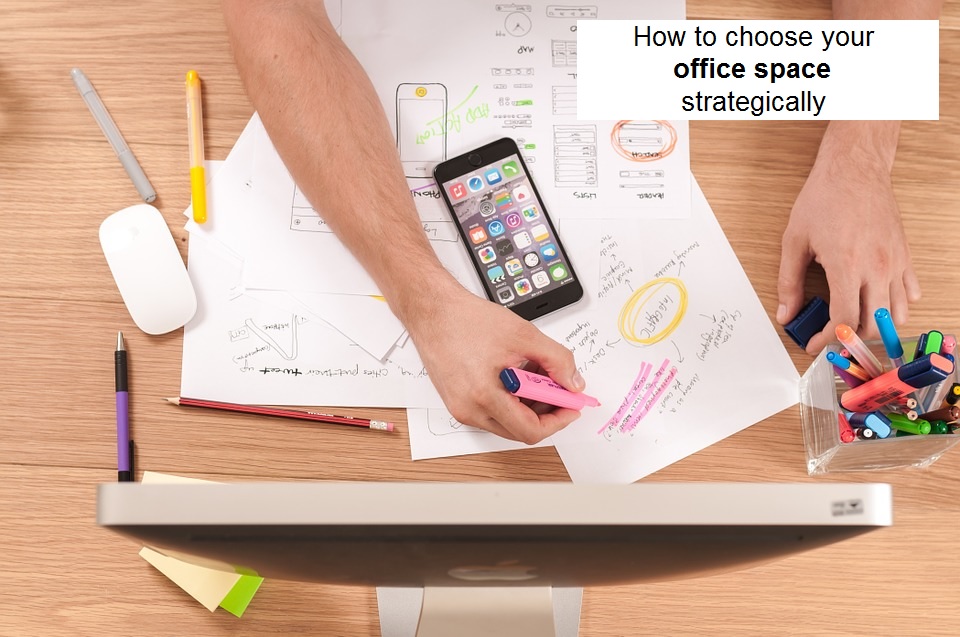
Where do you want your business to be in ten years’ time? How are you planning to get your business where you want it to be? Are you putting a recruitment plan in place in order to attract fresh talent and generate business growth?
Answering and planning for such questions are vital for commercial success. Believe it or not, an element of achieving business growth objectives lies within having the right office space for staff.
We’ve put together a strategic guideline for businesses wanting to choose the ideal office space for them:
Is Monday morning in your office brimming with optimism and vigour? If not, then it might be time to look for new office premises.
Flexibility is a buzzword in modern office space demands. As we wrote, in a blog titled ‘How could flexible space transform your business’, research shows that staff are happier when they are given more control over when and where they work.
Allowing staff to work in flexible office space crafts an environment of change, which inspires and motivates employees. Shared serviced offices can provide the ideal environment to meet and network with other companies, creating unique new business opportunities. These opportunities are even further inspired in offices with plenty of third space, using these creative spaces to encourage networking and chance meetings, often resulting in shared moments of genius. With a happier and more creative workforce, staff morale improves, retention rates are heightened, and productivity is generally enhanced.
As Morgan Lovell advise, location is also vitally important when choosing offices. If you’re hoping for a more motivated team, then part of your strategical office plan should consider the location of your space, and how easily accessible it is for commuters.
Consequently, this happier, loyal and more productive workforce will help put your company on the road to achieving the long term milestones you have set.
The size of your office shouldn’t limit the size of your team – the size of your demand should. If part of your ten-year company vision is to grow, then surely you should be working from a space that can cater for the changing size of your business?
As Effective Workplace writes:
“Companies aim to grow, not to remain stagnant. As jobs increase and new business develops, you will find yourself in need of more space to house employees in every department.”
This is when moving into flexible working space, such as shared offices and co-working centres, can prove invaluable, as they give employers the opportunity to move with their business demands. If a business finds itself with a high employee headcount, it needs to have the facilities and space to house the higher volume of staff.
Does your current office environment have space for employees to take time away from their workstations, relax and revitalise their batteries? If not, moving into office space that nurtures that all-important ‘time out’ could prove an invaluable move in generating a strategic working environment.
More and more businesses are placing an emphasis on workspaces which positively impact employee wellbeing. Offices with views, plenty of daylight flooding through windows, and open green spaces on their doorstep, are conducive with boosting wellbeing within the workforce.
As a report from the World Green Building Council notes:
“Longer distance views, away from computer screens or written documents, allow the eyes to adjust and re-focus, which reduces fatigue, headaches, and the effects of eye strain in the long term. Views also have a positive impact on wellbeing, in part by providing a psychological connection with other groups of people while in a safe space.”
Office space is a leading expense for most businesses. As part of strategical company growth planning, you should think of office space as an investment.
When choosing office space, you need to remember that you’re not just buying office space. You’re buying a strategic growth plan. The very best serviced office providers are experts in their field, and should be able to help you with any of your requirements.
Businesses need space where they can work collaboratively, and space to turn off and get comfortable. We’ve spent years looking at the functionality that teams need, and how they use their space from day to day. The leading serviced office providers should be using those principles when designing their workspaces – investing in the most effective solutions for helping businesses grow, rather than cutting corners to offer cheaper office space.
Serviced office space which offers many company essentials as standard, such as high spec IT systems, meeting rooms at your disposal, car parking space, and so on, can mean that companies make significant savings, as opposed to having to pay for individual components that are essential for the day-to-day running of the business.
Is your IT infrastructure slow, temperamental and generally holding your business back? From high-speed Wi-Fi, to a professional IT team ready to offer support should a crisis occur, strategic office space planning should prioritise moving into an office with a high quality, reliable IT infrastructure. Offices that are home to a high-spec tech infrastructure can help employees sharpen IT skills and get through workloads quickly.
The last thing any business wants is to be tied into a contract for a large office, with a tiny workforce occupying it due to an unexpected reduction in business. This is when having flexible office space can prove extremely important. Being able to ‘upsize’ or ‘downsize’ with a moment’s notice can save businesses significant amounts of money, not to mention the embarrassment of having a diminished team rattling around in an oversized office.
Do you want more than just office space? Would you rather an office that helps your business to grow, engaging and inspiring your employees? As experts in serviced office space, we have years of experience working with businesses to create personalised working environments that bring out the very best in their employees. Why not book a viewing to see our professional serviced offices in Leeds and Harrogate?